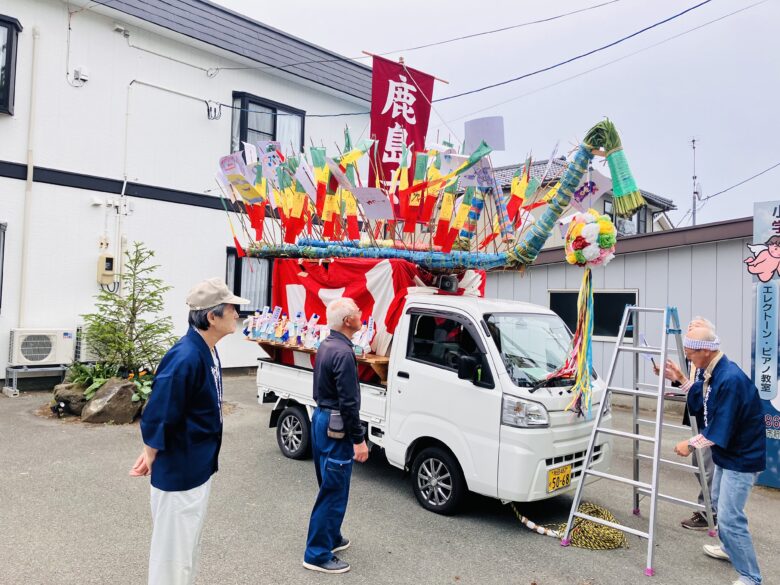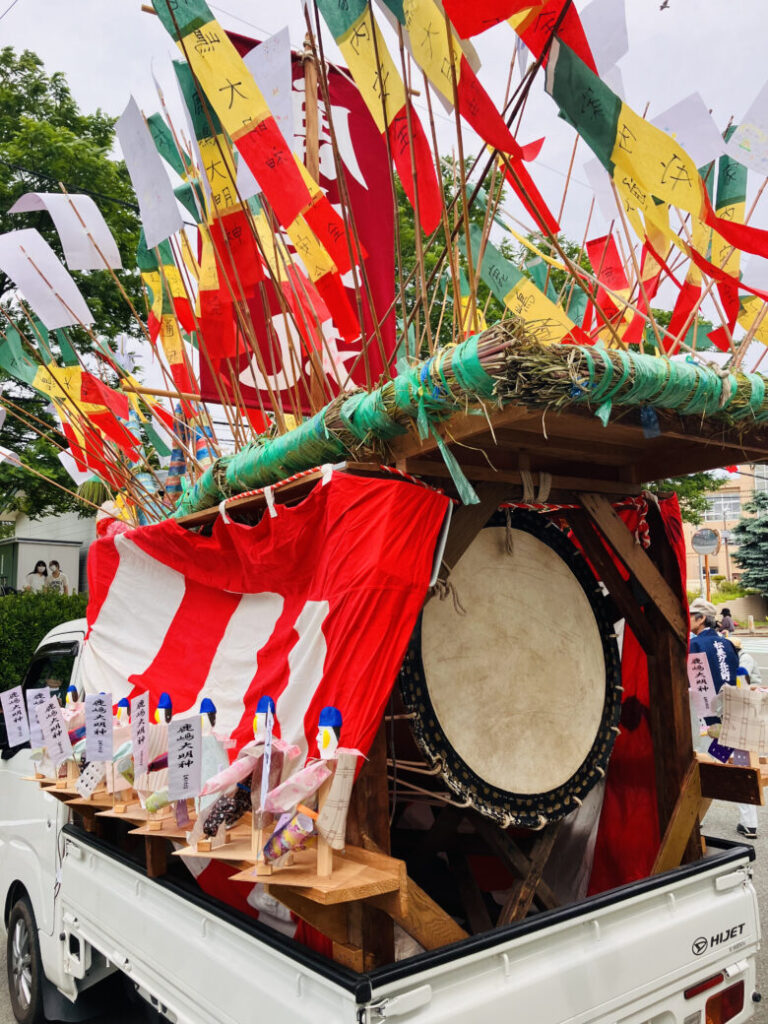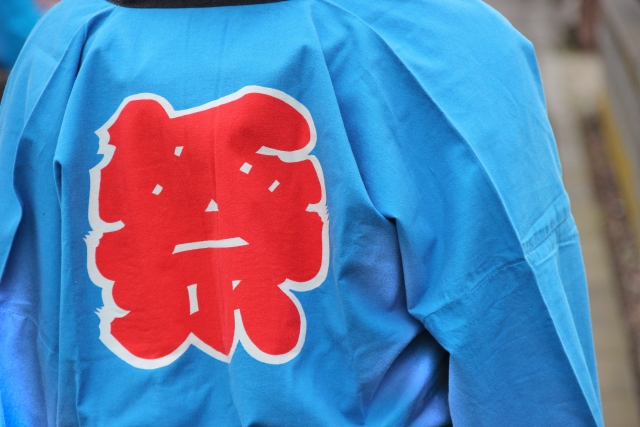私の地元勝平では、鹿嶋祭り(鹿嶋流し)というお祭りが毎年6月の第二日曜日に行われていましたが、コロナ禍により行われておらず、今年4年ぶりに行われましたので、私の住んでいる松美ヶ丘北町の鹿嶋祭りに参加してきました。鹿嶋祭りとは、新屋地域一帯で行われているお祭りで、ガジギという植物や草で作られた鹿嶋舟に子どもたちの無病息災を託した鹿嶋人形と言われる人形を飾り、笛や太鼓の囃子と共に、鹿嶋唄を歌いながら子どもと地域の人の手によって曳かれ町内を練り歩いたのち雄物川に流します。子どもたちの厄災を形代である人形に乗せて流すことで、子どもたちの無病息災と成長を祈る伝統行事です。4年も行われていなかったため、小学校5〜6年生の子どもさんはかろうじて小学校低学年で参加した以来でしたし、それ以外の子どもさんは皆初めてでどうしたらいいか分からないような状態でしたが、無事に行事を終えることができました。これから毎年続いていくことを願います。



I participated in the local Kashima Festival.
In my hometown of Katsuhira, the Kashima Festival (Kashima Nagashi) is held every year on the second Sunday of June. However, due to the COVID-19 pandemic, it was not held, and this year, after a gap of four years, it took place. The Kashima Festival is a festival held in the entire Araya region, where children and local residents decorate Kashima boats made of a plant or grass called Gajigi and display Kashima dolls, which are believed to ensure the children’s well-being. Accompanied by the sounds of flutes and drums, they sing the Kashima song while parading through the town, pulling the boats, and finally, they float them in the Omono River. This traditional event is a prayer for the children’s good health and growth, as they place their misfortunes onto the dolls and send them off. As it hadn’t been held for four years, it was the first time for the children in grades 5 and 6 to participate since their early years of elementary school, and for the other children, it was their first time ever, so they were unsure of what to do. However, we were able to successfully complete the event. We hope it will continue every year from now on.
Participé en el Festival local de Kashima. En mi ciudad natal, Katsuhira, se celebra el Festival de Kashima (Kashima Nagashi) todos los años el segundo domingo de junio. Sin embargo, debido a la pandemia de COVID-19, no se llevó a cabo y este año, después de cuatro años, finalmente se realizó. El Festival de Kashima es una festividad que se celebra en toda la región de Araya, donde los niños y los residentes locales decoran barcos de Kashima hechos de una planta o hierba llamada Gajigi y exhiben muñecos de Kashima, que se cree que aseguran el bienestar de los niños. Acompañados por el sonido de flautas y tambores, cantan la canción de Kashima mientras desfilan por el pueblo, arrastrando los barcos y finalmente los flotan en el río Omono. Este evento tradicional es una oración por la salud y el crecimiento de los niños, ya que depositan sus desgracias en los muñecos y los dejan ir. Como no se había celebrado durante cuatro años, fue la primera vez para los niños de quinto y sexto grado participar desde los primeros años de la escuela primaria, y para los demás niños, fue la primera vez en su vida, por lo que no estaban seguros de qué hacer. Sin embargo, logramos completar el evento con éxito. Esperamos que continúe cada año a partir de ahora.

